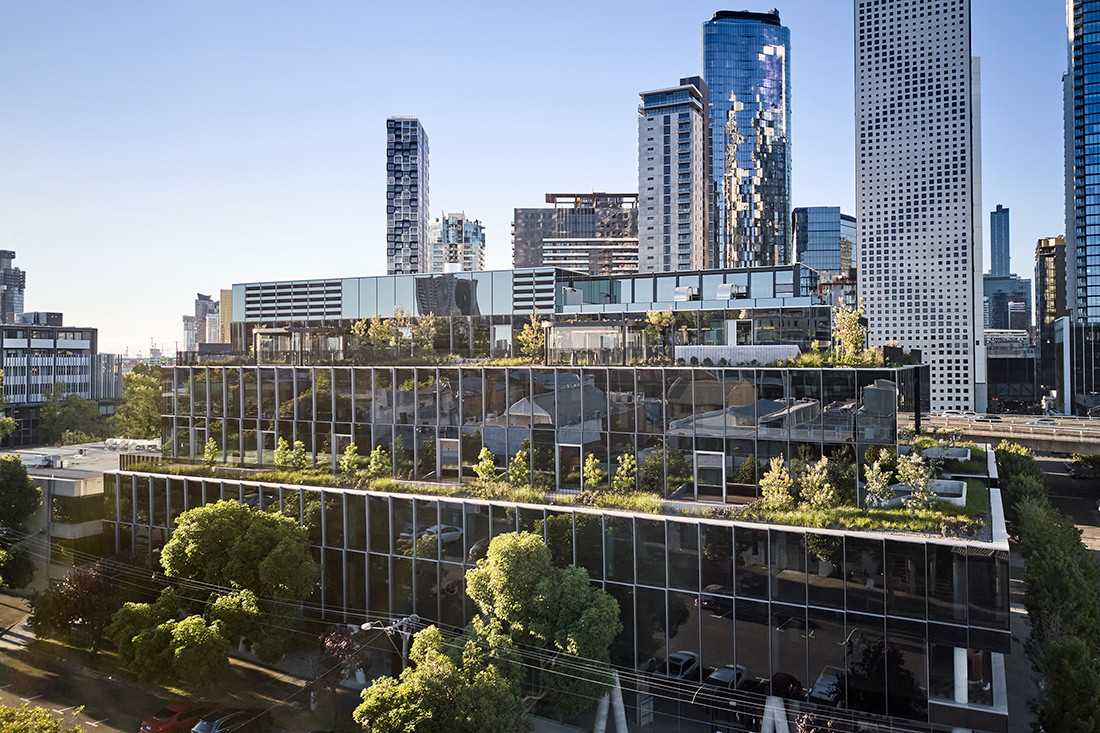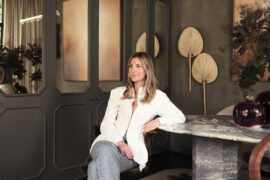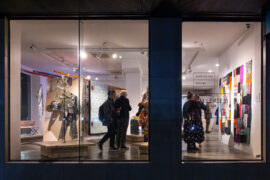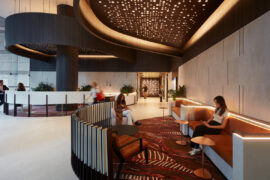The pandemic saw unprecedented freedoms given to employees in an effort to keep the ball rolling. But as we move away from it, what does the ideal office look like in a post-pandemic world, and what will it take to bring employees back to the office in a full time capacity?

May 26th, 2021
The CBD as we knew it is dead. Who killed it, and stock standard commercial development along with it? COVID-19. What’s taking its place? A hybrid work model of more flexible working arrangements, blending office-based work with working from home – typically at a work:home ratio somewhere in the vicinity of 3:2 to 4:1, according to the ABS.
What most reports are omitting to mention, however, is that the Monday-Friday routine—wake, shower, eat, commute, work, commute, eat, sleep—may yet stand a chance at being resurrected. Provided new and remodelled buildings cater for the needs of employees post-pandemic, that is.

Architects and designers are being tasked by companies across the globe to create the ideal office workspace. One that incorporates contemporary principles of biophilic and salutogenic design and creates separate spaces for planning, collaboration and relaxation. Subtle changes—pertaining to larger elevators, revolving doors, face scanning technologies and distance between cubicles—are a subsidiary of the anxieties surrounding COVID-19. But still, the question remains: What is going to coerce employees out of the comfort of their own homes, getting up earlier, coming home later and everything in between?
There’s been plenty of investigation and research into what the ideal office looks like, post-pandemic. Global practices including Bates Smart and Gensler have conducted surveys both in Australia and across the globe in an effort to formulate design ideas around the wants and needs of employees. A study by Bates Smart found that 70 per cent of the 1,500 respondents to its survey, The Impact of Remote Working, have more parks and visibly greener buildings at the top of their lists for the future look of our cities. It’s this desired connection to nature that is seeing a rise in rooftop gardens and plantations on the exterior facades of buildings. With enriching green spaces a part of our future commercial buildings, a return to the office and the CBD is likely to have a higher rate of perceived appeal.

Vincent Callebaut’s Tao Zhu Yin Yuan, located in Taiwan, is proof that we have been moving towards greener, biophilic towers well before the onset of COVID-19.
High tech buildings with heavy doses of fresh air and natural light provide the blueprint for modern workplaces moving forward, but have these ideals been around since before the pandemic? In Melbourne, Hickory Group’s latest development, Market Lane, designed by Elenberg Fraser, is a testament to the fact that such shifts have been in motion for sometime.
Taipei’s Tao Zhu Yin Yuan, likened by architect Vincent Callebaut to a set of lungs for the Asian city, outlines that biophilic, natural light-reliant buildings have been a calculated and gradual step forward for modernist architecture. What we can say though, is that like many other industries, the pandemic has sped up groundbreaking paradigm shifts. The future is now, and architects are certainly thinking that way, as seen in the planning stages of an array of new projects.

NeueHouse co-working club in New York, by BVN and NeueHouse in-house design team, photo: Ernesto Roman.
The major reason for coming back to the office, for many employees, is connection. The ability to easily collaborate with fellow colleagues on tasks and have superiors only a few metres away as opposed to booking in an appointment on a video conference is what is bringing people into the office despite our newfound flexibilities. 76 per cent of respondents to The Impact of Remote Working survey, conducted by Bates Smart, had collaboration with their team as the main priority upon returning to the office. Gensler’s annual workplace study found that both before and after the impacts of COVID-19 that a mostly open office is still desired by the respondents, but actually recorded a strong increase in a desire for more private workspaces, jumping from 8 per cent to 19 per cent from the year before.
What do these results tell us? There needs to be a mix of open and enclosed spaces for workers to move in and out of depending on the task at hand. Private spaces are more hygienic, entrust an employee with a place to knuckle down and focus, and of course, they’re private.
The challenge for architects amongst all this information is devising a floorplan within the confines of the space provided that encourages collaboration and teamwork, as well as accessible private spaces. Products like the Orangebox QT have offered us the ability to have enclosed spaces within open plan areas, and offer a window into the future. Private spaces can be clearly implemented into open plan projects, it’s just a matter of balance.

Is the Orangebox QT an indicator of where we’re headed in creating private spaces in open office areas?
Working from home has proven a mixed experience amongst those afforded the opportunity to do so in the past 12 months. It is a general consensus amongst all workers that they must work in the office at least once or twice a week. As we attempt to conceive, design and develop the buildings that we will work in for the next few decades, what we do know is that workplaces and commercial developments alike must provide employees with some benefit that is inaccessible at home.
A first rate view, plant-filled place to unwind, places full of natural light and fresh air will help drag employees back to the office, but personal connection above all must be factored into the design process of these floorplans. Without it, the CBD becomes a barren commercial wasteland.
INDESIGN is on instagram
Follow @indesignlive
A searchable and comprehensive guide for specifying leading products and their suppliers
Keep up to date with the latest and greatest from our industry BFF's!

Gaggenau’s understated appliance fuses a carefully calibrated aesthetic of deliberate subtraction with an intuitive dynamism of culinary fluidity, unveiling a delightfully unrestricted spectrum of high-performing creativity.

BLANCOCULINA-S II Sensor promotes water efficiency and reduces waste, representing a leap forward in faucet technology.

From a Paddington studio to the streets of Paris, with the odd Irish rural pub in between, the founder of Smac Studio shares her inspiration in design.

The Australian Design Centre (ADC) is facing a crisis as core funding cuts leave NSW without a government-funded organisation dedicated to craft and design practice.
The internet never sleeps! Here's the stuff you might have missed

ReLove has celebrated the official opening of ReStory by ReLove, a social enterprise giving beautifully curated, preloved furniture a second life.

Fine art that informs commercial design has authenticity and soul, and Ross Didier is at the forefront of creativity that is infused with passion.

In commercial interiors, flooring needs to do more than ground a space, it should tell a story. Through collaboration with the industry’s leading lights, Designer Rugs creates custom rugs & bespoke carpet solutions, finding ways to elevate commercial environments with material nuance and design integrity.